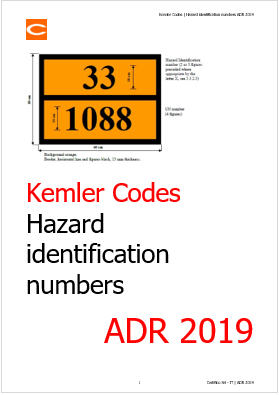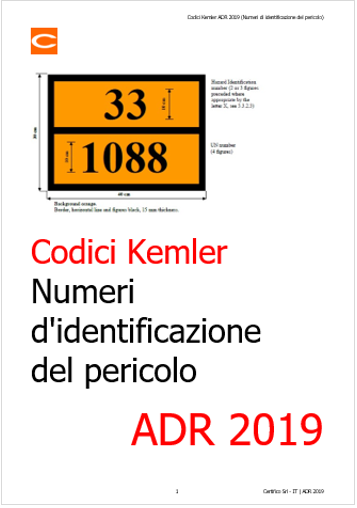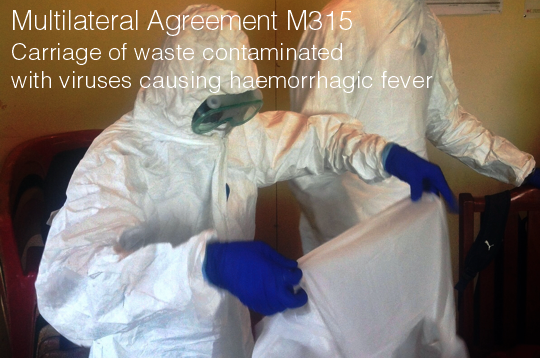Safety ADR / Dangerous Goods App
Safety ADR© è un’app per il trasporto di merci pericolose ADR che consente di:
– visualizzare tutta la Tabella A cap. 3.2 ADR per ONU/denominazione/classe/altro* (Italiano, Inglese);
– compilare per ciascuna materia ADR il “Report materia” con il parametro “Safety” (1) (Italiano, Inglese);
– compilare per ciascuna materia ADR la “Tremcards P.0” (2) (Italiano, Inglese);
– consultare le Istruzioni Scritte secondo l’ADR (Inglese, Italiano, Francese, Russo, Danese, Lettone, Norvegese, Svedese, Tedesco, Ungherese, Romeno, Portoghese, Ceco, Spagnolo, Turco, Sloveno, Slovacco, Estone, Neerlandese (Belgio), Neerlandese (Paesi Bassi), Polacco, Finlandese, Lituano, Bulgaro, Greco, Serbo);
– avere news in tempo reale visualizzate direttamente in Home;
– consultare l’accordo ADR (Inglese, Francese);
– consultare le etichette ADR, le classi, i Kemler (Italiano, Inglese).
Safety ADR© | Update 1.0.8 April 2019
Safety ADR© | Update 1.0.8 Aprile 2019
Hazard identification numbers 2019 (Kemler Codes)
Hazard identification numbers 2019 (Kemler Codes)
CHAPTER 5.3 PLACARDING AND MARKING OF CONTAINERS, BULK CONTAINERS, MEGCs, MEMUs, TANK-CONTAINERS, PORTABLE TANKS AND VEHICLES
…
5.3.2.3 Meaning of hazard identification numbers
5.3.2.3.1 The hazard identification number consists of two or three figures. In general, the figures indicate the
following hazards:
2 Emission of gas due to pressure or to chemical reaction
3 Flammability of liquids (vapours) and gases or self-heating liquid
4 Flammability of solids or self-heating solid
5 Oxidizing (fire-intensifying) effect
6 Toxicity or risk of infection
7 Radioactivity
8 Corrosivity
9 Risk of spontaneous violent reaction
NOTE: The risk of spontaneous violent reaction within the meaning of figure 9 include the possibility following from the nature of a substance of a risk of explosion, disintegration and polymerization reaction following the release of considerable heat or flammable and/or toxic gases.
Doubling of a figure indicates an intensification of that particular hazard.
Where the hazard associated with a substance can be adequately indicated by a single figure, this is followed by zero.
The following combinations of figures, however, have a special meaning: 22, 323, 333, 362, 382, 423, 44, 446, 462, 482, 539, 606, 623, 642, 823, 842, 90 and 99, see 5.3.2.3.2 below.
Codici Kemler ADR 2019 (Numeri di identificazione del pericolo)
Codici Kemler ADR 2019 (Numeri di identificazione del pericolo)
Documento allegato aggiornamento ADR 2019 (IT/EN)
CAPITOLO 5.3
Etichettatura e segnalazione arancio dei contenitori, contenitori per il trasporto alla rinfusa, CGEM, MEMU, contenitori cisterna, cisterne mobili e veicoli
…
5.3.2.3.
Significato dei numeri d’identificazione del pericolo
5.3.2.3.1.
Il numero di identificazione del pericolo si compone di due o tre cifre. Generalmente le cifre indicano i seguenti pericoli:
2 Emissione di gas risultanti dalla pressione o da una reazione chimica
3 Infiammabilità di materie liquide (vapori) e gas o materia liquida autoriscaldante
4 Infiammabilità di materie solide o materia solida autoriscaldante
5 Comburenza (favorisce l’incendio)
6 Tossicità o pericolo d’infezione
7 Radioattività
8 Corrosività
9 Pericolo di violenta reazione spontanea
NOTA: Il pericolo di violenta reazione spontanea ai sensi della cifra 9 comprende la possibilità derivante dalla natura della materia di un pericolo di esplosione, di disintegrazione e di una reazione di polimerizzazione seguita dallo sviluppo di considerevole calore o di gas infiammabili e/o tossici.
Il raddoppio di una cifra indica un’intensificazione di quel particolare pericolo.
Quando il pericolo di una merce può essere adeguatamente indicato da una sola cifra, tale cifra deve essere completata da uno zero (0).
Le seguenti combinazioni di cifre hanno tuttavia un significato speciale: 22, 323, 333, 362, 382, 423, 44, 446, 462, 482, 539, 606, 623, 642, 823, 842, 90 e 99 (cfr. 5.3.2.3.2 qui di seguito).
Quando il numero d’identificazione del pericolo è preceduto dalla lettera “X”, ciò significa che la materia reagisce pericolosamente con l’acqua. Per tali materie, l’acqua può essere utilizzata solo con l’approvazione di esperti.
Per le materie della classe 1, il codice di classificazione secondo la colonna (3b) della tabella A del capitolo 3.2 sarà utilizzato come numero di identificazione del pericolo. Il codice di classificazione si compone:
– del numero della divisione secondo 2.2.1.1.5, e
– della lettera del gruppo di contabilità secondo 2.2.1.1.6.
In rosso le novità ADR 2019
5.3.2.3.2.
I numeri di identificazione del pericolo indicati nella colonna (20) della Tabella A del capitolo 3.2 hanno il seguente significato:
20 gas asfissiante o che non presenta pericolo sussidiario
22 gas liquefatto refrigerato, asfissiante
223 gas liquefatto refrigerato, infiammabile
225 gas liquefatto refrigerato, comburente (favorisce l’incendio)
23 gas infiammabile
238 gas, infiammabile corrosivo
239 gas infiammabile, che può produrre spontaneamente una reazione violenta
25 gas comburente (favorisce l’incendio)
26 gas tossico
263 gas tossico e infiammabile
265 gas tossico e comburente (favorisce l’incendio)
268 gas tossico e corrosivo
…
segue
Multilateral Agreement M315
Multilateral Agreement M315
M315 Carriage of waste contaminated with viruses causing haemorrhagic fever
| COUNTRY | SIGNED | REVOKED |
| Belgium | 30/11/2018 | |
| Germany | 12/12/2018 | |
| Switzerland | 07/01/2019 | |
| Luxembourg | 06/02/2019 | |
| Netherlands | 19/03/2019 |
Date of expiry: 31 December 2023
Accord multilatéral M315
au titre de la section 1.5.1 de l’annexe A de l’ADR, relatif au transport de déchets contaminés par des virus provoquant une fièvre hémorragique
1. Par dérogation aux prescriptions du chapitre 6.3 et à l’instruction d’emballage P620 du 4.1.4.1, les déchets ayant été contaminés ou soupçonnés d’avoir été contaminés par un virus provoquant une fièvre hémorragique telle qu’Ebola peuvent, pour leur transport vers une installation d’élimination définitive, etre emballés et transportés par route selon les dispositions suivantes:
2. MARCHANDISES DANGEREUSES
Substances infectieuses, affectant les humains Classe 6.2 UN 2814
Cet accorci s’applique à tous les déchets ayant été contaminés ou soupçonnés d’avoir été contaminés par un virus de catégorie A provoquant une fièvre hémorragique qui, en raison de limitations de taille spécifiques ou du risque de contamination, ne peuvent etre placés en toute sécurité dans les emballages P620 actuellement disponibles. Ces déchets présentent un potentiel élevé de contamination du personnel médical et du personnel d’intervention au cours du processus d’emballage.
3. EMBALLAGES
“Les emballages combinés” constitués des composants suivants sont autorisés :
1. Emballage intérieur rigide, faisant office d’emballage primaire: fut plastique 1 H2, qui répond aux exigences du 4.1.1 et 4.1.3 et qui a été testé et certifié au minimum au niveau de performance du groupe d’emballage Il pour les liquides ou solides, selon ce qui est approprié.
(a) Pour les emballages testés pour des solides, suffisamment d’agent gélifiant ou de matériau inerte absorbant approprié sera ajouté dans l’emballage intérieur primaire, pour éliminer la présence de tout liquide libre.
(b) L’emballage primaire sera fermé conformément aux instructions fournies par le fabricant.
(c) Lorsque l’emballage intérieur primaire aura été scellé, la surface extérieure de cet emballage intérieur sera traitée avec un désinfectant approprié pour le virus. Ni l’emballage primaire ni l’emballage secondaire ne seront affectés négativement ni affaiblis structurellement par le désinfectant.
…
Multilateral Agreement M317
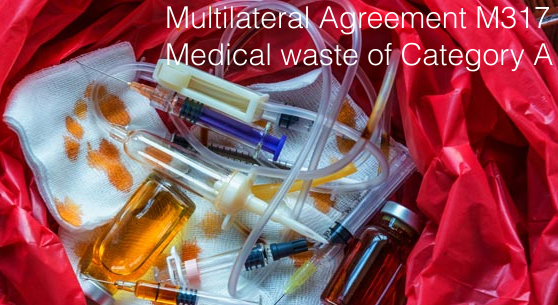
Multilateral Agreement M317: Medical waste of Category A
This multilateral agreement is seeking a derogation from the provisions of ADR relating to the transport of solid medical or clinical waste of Category A transported for disposal. It seeks the to introduce the provisions for such waste which have been developed and agreed to by the UN Sub-Committee of Experts for the Transport of Dangerous Goods for incorporation into the UN Model Regulations Rev.21.
The multilateral agreement specifies that such waste may be carried under UN 3549 MEDICAL WASTE, CATEGORY A, AFFECTING HUMANS, solid or MEDICAL WASTE, CATEGORY A, AFFECTING ANIMALS only, solid under the provisions defined/stated in items/paragraphs (2) to (7) within MLA317.
| COUNTRY | SIGNED | REVOKED |
| United Kingdom | 11/03/2019 | |
| Sweden | 29/03/2019 |
Date of expiry: 31 December 2020
Multilateral Agreement M317 Under section 1.5.1 of ADR Concerning the carriage of solid medical or clinical waste, Category A
(1) By derogation from the provisions of ADR, solid medical or clinical waste, Category A transported for disposal may be carried under UN 3549 under the provisions defined/stated in items/paragraphs (2) to (7) as follows: (2) It is carried by using the following UN number, Proper Shipping Name and Class assignment:
| UN No | Name and description | Class |
| 3549 | MEDICAL WASTE, CATEGORY A, AFFECTING HUMANS, solid or MEDICAL WASTE, CATEGORY A, AFFECTING ANIMALS only, solid |
6.2 |
(3) Assignment of Category A solid medical waste transported for disposal shall be done according to the following classification principles:
3.1 Medical or clinical wastes are wastes derived from the veterinary treatment of animals, the medical treatment of humans or from bio-research.
3.2 Medical or clinical waste containing Category A infectious substances shall be assigned to UN 2814, UN 2900 or UN 3549 as appropriate. Solid medical waste containing Category A infectious substances generated from the medical treatment of humans or veterinary treatment of animals may be assigned to UN 3549. The UN 3549 entry shall not be used for waste from bio-research or liquid waste.
3.3 Category B infectious substances shall be assigned to UN 3291.
(4) The solid medical waste shall be packed in conformity with the packing provisions in annex I or II.
(5) The requirements of Chapter 6.1 and 6.6 for the construction and testing of packagings and large packagings apply.
(6) The following statement shall be included in the transport document: “Carriage agreed according to section 1.5.1 of ADR (M317)”.
(7) This agreement shall be valid until 31 December 2020 for the carriage on the territories of those ADR Contracting Parties signatory to this agreement. If it is revoked before then by one of the signatories, it shall remain valid until the above-mentioned date only on the territories of those Contracting Parties signatory to this Agreement which have not revoked it.
Add More
Modifica DS 188: Batterie al litio per lo smaltimento
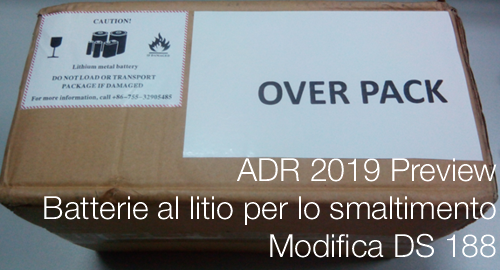
Parte 3 – lista delle merci pericolose, disposizioni speciali ed esenzioni relative a quantità limitate e quantità esenti capitolo
3.3 – Disposizioni speciali applicabili ad alcune materie od oggetti 3.3.1. Nel presente capitolo si trovano le disposizioni speciali corrispondenti ai numeri indicati nella colonna della Tabella A del capitolo 3.2, con riferimento a materie od oggetti ai quali si applicano queste disposizioni. Quando una disposizione speciale comprende una prescrizione in materia di marcatura degli imballaggi, si applicano le disposizioni dei commi a) e b) del 5.2.1.2.
Se il marchio è oggetto di una particolare formulazione tra virgolette, come ” BATTERIE AL LITIO PER LO SMALTIMENTO”, la dimensione minima del marchio è di 12 mm, se non diversamente specificato nella disposizione speciale o altrove nell’ADR.
188 Le pile e gli accumulatori (batterie) presentati al trasporto non sono sottoposti alle altre prescrizioni dell’ADR se soddisfano le seguenti condizioni:
a) per una pila al litio metallo o di lega al litio, il contenuto di litio non è superiore a 1 grammo e, per una pila agli ioni di litio, l’energia nominale in wattora non deve superare i 20 Wh
b) per una batteria al litio metallo o di lega al litio, il contenuto totale di litio non è superiore a 2 grammi e per una batteria agli ioni di litio l’energia nominale in wattora non deve superare i 100 Wh. Nel caso di batterie al litio ionico che soddisfano tale disposizione, l’energia nominale in wattora deve essere riportata sul rivestimento esterno, a eccezione di quelle fabbricate prima del 1° gennaio 2009;
NOTA: quando le batterie al litio conformi al 2.2.9.1.7 (f) sono trasportate in conformità con questa disposizione speciale, il contenuto totale di litio di tutte le celle di metallo al litio contenute nella batteria non deve superare 1,5 g e la capacità totale di tutto il litio le celle di ioni contenute nella batteria non devono eccedere 10 Wh (vedere disposizione speciale 387). “
c) ogni pila o batteria soddisfa le disposizioni del 2.2.9.1.7 (a), (e), (f) e se applicabile (g);
d) le pile e le batterie, a meno che non siano installate in un equipaggiamento, devono essere poste in imballaggi interni che le avvolgono completamente. Le pile e le batterie devono essere protette in modo da evitare cortocircuiti. In questo senso s’intende proteggerle dal contatto con materiale elettricamente conduttivo, contenuti all’interno dello stesso imballaggio, che potrebbero causare dei cortocircuiti. Gli imballaggi interni devono essere imballati in imballaggi esterni solidi e conformi alle disposizioni del 4.1.1.1, 4.1.1.2 e 4.1.1.5;
e) le pile e le batterie, installate in equipaggiamenti, devono essere protette da danneggiamenti e cortocircuiti, e l’equipaggiamento deve essere provvisto di mezzi efficaci in modo da impedire ogni funzionamento accidentale. Questa prescrizione non si applica ai dispositivi intenzionalmente attivi durante il trasporto (trasmettitori di identificazione radio, orologi, sensori, ecc.) e non suscettibili di generare uno sviluppo pericoloso di calore. Nel caso di batterie installate in un equipaggiamento, quest’ultimo deve essere posto in imballaggi esterni solidi, costruiti con materiali appropriati e aventi resistenza e progettazione adatte alla capacità dell’imballaggio e all’uso previsto, a meno che una protezione equivalente della batteria non sia assicurata dall’equipaggiamento nel quale è contenuta;
f) ogni collo deve recare il marchio di pila al litio appropriato, come indicato nel 5.2.1.9. Tale prescrizione non si applica:
i) ai colli contenenti solo batterie bottoni montate all’interno di un equipaggiamento (compresi i circuiti stampati);
ii) e ai colli contenenti non più di 4 pile o 2 batterie montate all’interno di un equipaggiamento, quando la spedizione non comporta più di due colli.
Quando i colli sono collocati in un sovrimballaggio, il contrassegno della batteria al litio deve essere chiaramente visibile o riprodotto all’esterno del sovrimballaggio e il sovrimballaggio deve essere contrassegnato con la scritta “OVERPACK”. La scritta del marchio “OVERPACK” deve avere un’altezza di almeno 12 mm.
“NOTA: Confezioni contenenti batterie al litio imballate in conformità alle disposizioni della Parte 4, Capitolo 11, istruzioni di imballaggio 965 o 968, Sezione IB delle Istruzioni tecniche ICAO recanti il marchio come mostrato in 5.2.1.9 (marchio batteria al litio) e il l’etichetta di cui al punto 5.2.2.2.2, modello n. 9A è considerata conforme alle disposizioni di questa disposizione speciale. “
g) a meno che le batterie non siano montate all’interno di un equipaggiamento, ciascun collo deve poter resistere ad una prova di caduta da un’altezza di 1,2 m, qualunque sia il suo orientamento, senza che le pile o le batterie che esso contiene siano danneggiate, senza che il suo contenuto sia spostato a tal punto che le batterie (o le pile) si tocchino, e senza che vi sia fuoriuscita del contenuto; e
h) a meno che le batterie non siano montate all’interno di un equipaggiamento o imballate con un equipaggiamento, i colli non possono superare una massa lorda di 30 kg. Come usato in questa disposizione speciale, “equipaggiamento” indica un apparecchio per il quale le batterie al litio o le batterie forniranno energia elettrica per il suo funzionamento Come sopra ed altrove nell’ADR, con “contenuto di litio” si intende la massa di litio presente nell’anodo di una pila al litio metallo o di lega al litio.
Esistono rubriche distinte per le batterie al litio metallico e per le batterie al litio ionico in modo da facilitare il trasporto di tali batterie per modi di trasporto specifici e per permettere l’esecuzione delle operazioni d’intervento in caso d’incidente.
Una batteria a una sola pila così come definita nella sottosezione 38.3.2.3 della terza parte del Manuale delle prove e dei criteri è considerata come una “pila” e deve essere trasportata secondo le esigenze delle “pile” nell’ambito della presente disposizione speciale.
SP 188 Modified for “Lithium batteries for disposal”
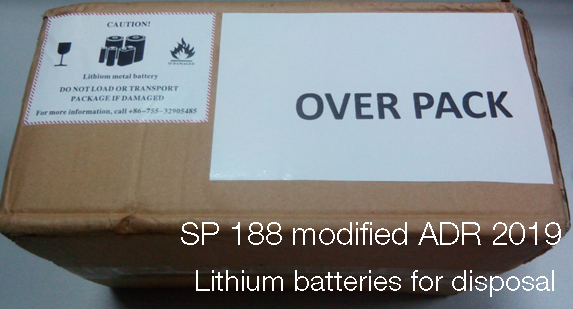
Special provisions applicable to certain articles or substances
When Column (6) of Table A of Chapter 3.2 indicates that a special provision is relevant to a substance or article, the meaning and requirements of that special provision are as set forth below. Where a special provision includes a requirement for package marking, the provisions of 5.2.1.2 (a) and (b) shall be met.
If the required mark is in the form of specific wording indicated in quotation marks, such as “LITHIUM BATTERIES FOR DISPOSAL”, the size of the mark shall be at least 12 mm, unless otherwise indicated in the special provision or elsewhere in ADR.
188 Cells and batteries offered for carriage are not subject to other provisions of ADR if they meet the following:
(a) For a lithium metal or lithium alloy cell, the lithium content is not more than 1 g, and for a lithium ion cell, the Watt-hour rating is not more than 20 Wh;
(b) For a lithium metal or lithium alloy battery the aggregate lithium content is not more than 2 g, and for a lithium ion battery, the Watt-hour rating is not more than 100 Wh.
Lithium ion batteries subject to this provision shall be marked with the Watt-hour rating on the outside case, except those manufactured before 1 January 2009;
NOTE: When lithium batteries in conformity with 2.2.9.1.7 (f) are carried in accordance with this special provision, the total lithium content of all lithium metal cells contained in the battery shall not exceed 1.5 g and the total capacity of all lithium ion cells contained in the battery shall not exceed 10 Wh (see special provision 387).
(c) Each cell or battery meets the provisions of 2.2.9.1.7 (a), (e), (f) if applicable and (g);
(d) Cells and batteries, except when installed in equipment, shall be packed in inner packagings that completely enclose the cell or battery. Cells and batteries shall be protected so as to prevent short circuits. This includes protection against contact with electrically conductive material within the same packaging that could lead to a short circuit. The inner packagings shall be packed in strong outer packagings which conform to the provisions of 4.1.1.1, 4.1.1.2 and 4.1.1.5;
(e) Cells and batteries when installed in equipment shall be protected from damage and short circuit, and the equipment shall be equipped with an effective means of preventing accidental activation. This requirement does not apply to devices which are intentionally active in carriage (radio frequency identification (RFID) transmitters, watches, sensors, etc.) and which are not capable of generating a dangerous evolution of heat. When batteries are installed in equipment, the equipment shall be packed in strong outer packagings constructed of suitable material of adequate strength and design in relation to the packaging’s capacity and its intended use unless the battery is afforded equivalent protection by the equipment in which it is contained;
(f) Each package shall be marked with the appropriate lithium battery mark, as illustrated in 5.2.1.9;
This requirement does not apply to:
(i) Packages containing only button cell batteries installed in equipment (including circuit boards); and
(ii) Packages containing no more than four cells or two batteries installed in equipment, where there are not more than two packages in the consignment;
“When packages are placed in an overpack, the lithium battery mark shall either be clearly visible or be reproduced on the outside of the overpack and the overpack shall be marked with the word “OVERPACK”. The lettering of the “OVERPACK” mark shall be at least 12 mm high.
“NOTE: Packages containing lithium batteries packed in conformity with the provisions of Part 4, Chapter 11, packing instructions 965 or 968, Section IB of the ICAO Technical Instructions that bear the mark as shown in 5.2.1.9 (lithium battery mark) and the label shown in 5.2.2.2.2, model No. 9A shall be deemed to meet the provisions of this special provision.”
(g) Except when batteries are installed in equipment, each package shall be capable of withstanding a 1.2 m drop test in any orientation without damage to cells or batteries contained therein, without shifting of the contents so as to allow battery to battery (or cell to cell) contact and without release of contents; and
(h) Except when batteries are installed in or packed with equipment, packages shall not exceed 30 kg gross mass. As used in this special provision “equipment” means apparatus for which the lithium cells or batteries will provide electrical power for its operation.”.
As used above and elsewhere in ADR, “lithium content” means the mass of lithium in the anode of a lithium metal or lithium alloy cell.
Separate entries exist for lithium metal batteries and lithium ion batteries to facilitate the carriage of these batteries for specific modes of carriage and to enable the application of different emergency response actions.
A single cell battery as defined in Part III, sub-section 38.3.2.3 of the Manual of Tests and Criteria is considered a “cell” and shall be carried according to the requirements for “cells” for the purpose of this special provision.
Safety ADR© | Update 1.0.6 Gennaio 2019
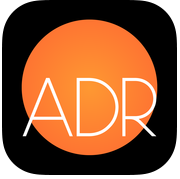
Safety ADR© – Dangerous Goods app IT/EN | ADR 2019
18.01.2019: Update Rev. 1.0.6
– [Normativa] Aggiunti documenti UNECE ADR 2019 in 2 lingue (inglese e francese) e corrigendum
– [Fix] ADR 2017 non supportato dopo acquisto ADR 2019


Safety ADR© è un’app per il trasporto di merci pericolose ADR che consente di:
– visualizzare tutta la Tabella A cap. 3.2 ADR per ONU/denominazione/classe/altro* (Italiano, Inglese);
– compilare per ciascuna materia ADR il “Report materia” con il parametro “Safety” (1) (Italiano, Inglese);
– compilare per ciascuna materia ADR la “Tremcards P.0” (2) (Italiano, Inglese);
– consultare le Istruzioni Scritte secondo l’ADR (Inglese, Italiano, Francese, Russo, Danese, Lettone, Norvegese, Svedese, Tedesco, Ungherese, Romeno, Portoghese, Ceco, Spagnolo, Turco, Sloveno, Slovacco, Estone, Neerlandese (Belgio), Neerlandese (Paesi Bassi), Polacco, Finlandese, Lituano, Bulgaro, Greco, Serbo);
– avere news in tempo reale visualizzate direttamente in Home;
– consultare l’accordo ADR (Inglese, Francese, Russo);
– consultare le etichette ADR, le classi, i Kemler (Italiano, Inglese)
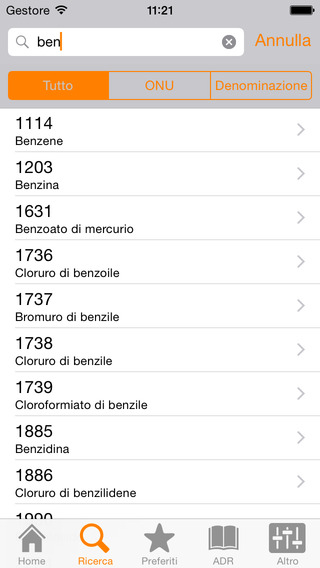
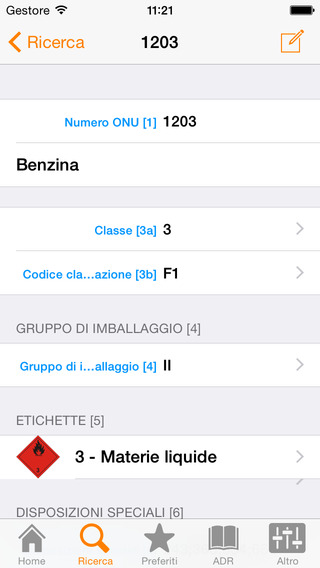
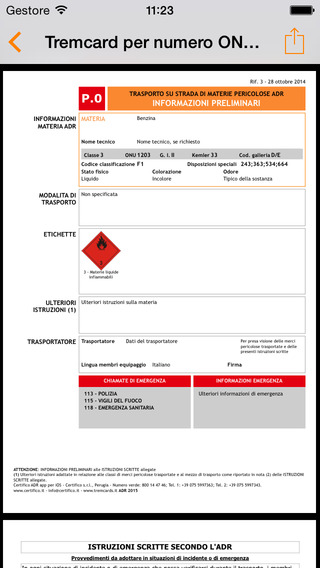
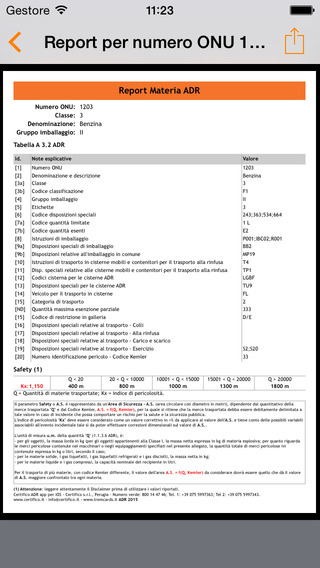
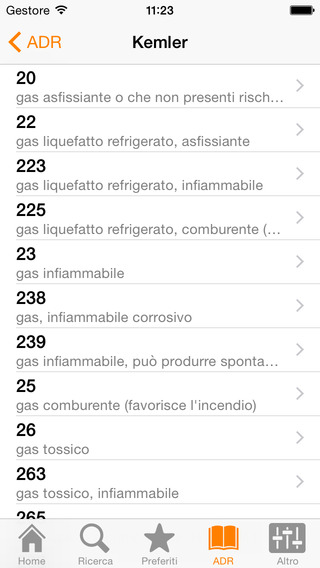
Update. 1.0.6 iOS / 1.0.2 Android
– [Normativa] Aggiunti documenti UNECE ADR 2019 in 2 lingue (inglese e francese) e corrigendum
– [Fix] ADR 2017 non supportato dopo acquisto ADR 2019
(1) Safety
Il parametro “Safety” dà informazioni sull’Area di Sicurezza (A.S.), dipendente dal quantitativo della merce trasportata “Q” e dal codice “Kemler” corretta da un fattore “K”, per la quale si ritiene che la merce trasportata debba essere debitamente delimitata a tale valore in caso di incidente che possa comportare un rischio per la salute e la sicurezza pubblica (leggere con attenzione il Disclaimer).
(2) Tremcards P.0
La “Tremcards P.0” (Transport Emergency Cards – P.0) è formata da 4 pagine di Istruzioni Scritte ufficiali ADR + Pagina 0 di Informazioni Preliminari Certifico “P.0”.
La pagina “P.0” è stata introdotta in aggiunta alle Istruzioni Scritte ADR per facilitare una migliore individuazione delle merci trasportate in caso di emergenza e come indicato in nota 2 di pagina 3 delle Istruzioni Scritte ADR per aggiungere “Ulteriori Istruzioni”:
ADR 5.4.3 Nota (2) delle ISTRUZIONI SCRITTE:
“Le ulteriori istruzioni qui sopra indicate possono essere adattate in relazione alle classi di merci pericolose trasportate e al mezzo di trasporto.”
ADR 2017 – Accordo europeo relativo al trasporto internazionale di merci pericolose su strada.
Safety e Tremcards P.0 sono modelli depositati Certifico S.r.l. – Italia
Prezzo: € 9,99*
Acquisto database ADR 2019: € 23,99 (Acquisto in app)
Categoria: ProduttivitàPubblicato: 25/10/2018
Versione: iOS 1.0.5 / Android 1.0.1
Dimensioni: 64.2
Lingue: Italiano, Inglese
Sviluppatore: Certifico s.r.l.
© 2000-2019 Certifico S.r.l.


Safety e Tremcards P.0 sono modelli depositati Certifico S.r.l. – Italia
*L’app presenta solo 40 materie ADR, il database completo delle materie ADR è acquistabile, dopo l’installazione, con l’acquisto in app.
Safety ADR© | Update 1.0.6 January 2019

Safety ADR© – Dangerous Goods ADR app IT/EN | ADR 2019
18.01.2019: Update Rev. 1.0.6


Safety ADR© app Dangerous Goods ADR
ADR 2019 – European Agreement concerning the International Carriage of Dangerous Goods by Road.
This update version has been prepared on the basis of amendments ADR applicable as from January 1st, 2019.
Safety ADR© is an app that allows you to:
– Search the full table A cap. 3.2 ADR for UN / name / class / other* (Italian, English);
– Fill in the ADR for each subject “Substance Report” with the “Safety” parameter (1) (Italian, English);
– Fill in the ADR for each subject “Tremcards P.0″(2) (Italian, English);
– Read/Print/share/send PDF of Instructions in Writing according to ADR 5.4.2 (English, Italian, French, Russian, Danish, Latvian, Norwegian, Swedish, German, Hungarian, Romanian, Portuguese, Czech, Spanish, Turkish, Slovenian, Slovak, Estonian, Dutch (Belgium), Dutch (Netherlands), Polish, Finnish, Lithuanian, Bulgarian, Greek, Serbian);
– Get news on the home screen;
– Read/Print the ADR agreement (English, French, Russian);
– See ADR labels, classes, Kemler (Italian, English).
The completed documents, “Substance Report” and “Tremcards P.0” can be saved via e-mail in pdf format.
18.01.2019: What’s news
– [Rules] Added UNECE ADR 2019 documents in 2 languages (English and French) and corrigendum
– [Fix] ADR 2017 not supported after purchase ADR 2019
(1) Safety
The “Safety” parameter for information on the “Safety Area” (S.A.), depends on the quantity “Q” of carried goods and the code “Kemler” corrected by a “K” factor, for which it is believed that the goods to be transported duly bounded to that value in the event of an accident that could pose a risk to public health and safety (carefully read the Disclaimer).
(2) Tremcards P.0
The “Tremcards P.0” (Transport Emergency Cards – P.0) consists of 4 pages: Instruction in writing according ADR + Page “0” of Getting Started Certifico “P.0”.
The “P.0” was introduced in addition to the Instruction in writing according ADR to facilitate a better identification of the goods carried in emergency situation and as indicated in note 2 on page 3 of the Instruction in writing to add “Additional guidance”:
ADR cap. 5.4.3 Note (2) Instruction in writing: “Additional guidance shown above may be adapted to reflect the classes of dangerous goods to be carried and their means of transportation”
Price: € 9,99
In-app Products: € 23,99
Category: Productivity
Date: Oct 25, 2018
Version: iOS 1.0.5 / Android 1.0.1
Size: 64.2 MB
Languages: English, Bulgarian, Czech, Danish, Dutch, Estonian, Finnish, French, German, Greek, Hungarian, Italian, Latvian, Lithuanian, Norwegian Bokmål, Polish, Portuguese, Romanian, Russian, Serbian, Slovak, Slovenian, Spanish, Swedish, Turkish
Seller: Certifico s.r.l.
© 2004-2018 Certifico S.r.l. – Italty
info@certifico.com
+39 075 5997363


Safety and Tremcards P.0 are trademarks of Certifico S.r.l. – Italy.
*The app has only 40 materials ADR , the complete database of ADR materials is purchasable, after installation, by in-app purchase.
ADR 2019: File
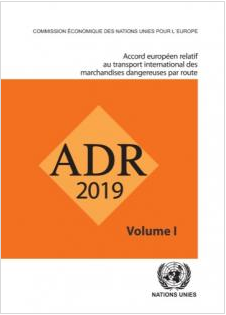
ADR 2017
The European Agreement concerning the International Carriage of Dangerous Goods by Road (ADR 2017)
Update: 04.01.2017
General
The European Agreement concerning the International Carriage of Dangerous Goods by Road (ADR) was done at Geneva on 30 September 1957 under the auspices of the United Nations Economic Commission for Europe, and it entered into force on 29 January 1968. The Agreement itself was amended by the Protocol amending article 14 (3) done at New York on 21 August 1975, which entered into force on 19 April 1985.
According to article 2 of the Agreement, dangerous goods barred from carriage by Annex A shall not be accepted for international transport, while international transport of other dangerous goods shall be authorized subject to compliance with:
– the conditions laid down in Annex A for the goods in question, in particular as regards their packaging and labelling; and
– the conditions laid down in Annex B, in particular as regards the construction, equipment and operation of the vehicle carrying the goods in question.
Nevertheless, according to article 4, each Contracting Party shall retain the right to regulate or prohibit, for reasons other than safety during carriage, the entry of dangerous goods into its territory. Contracting Parties also retain the right to arrange, by bilateral or multilateral agreements, that certain dangerous goods which are prohibited from carriage by Annex A be internationally carried, subject to certain conditions, on their territories, or that dangerous goods authorized to be carried internationally according to Annex A be carried on their territories under conditions less stringent than those specified in Annexes A and B.
Annexes A and B have been regularly amended and updated since the entry into force of ADR.
Structure of Annexes A and B
The Working Party on the Transport of Dangerous Goods (WP.15) of the Economic Commission for Europe’s Committee on Inland Transport decided, at its fifty-first session (26-30 October 1992), to restructure Annexes A and B, on the basis of a proposal by the International Road Transport Union (TRANS/WP.15/124, paras. 100-108).
The main objectives were to make the requirements more accessible and more user-friendly so that they could be applied more easily not only to international road transport operations under ADR, but also to domestic traffic in all European States through national or European Community legislation, and ultimately to ensure a consistent regulatory framework at European level. It was also considered necessary to identify more clearly the duties of the various participants in the transport chain, to group more systematically the requirements concerning these various participants, and to differentiate the legal requirements of ADR from the European or international standards that could be applied to meet such requirements.
The structure is consistent with that of the United Nations Recommendations on the Transport of Dangerous Goods, Model Regulations, the International Maritime Dangerous Goods Code (IMDG Code) and the Regulations concerning the International Carriage of Dangerous Goods by Rail (RID).
It has been split into nine parts, but still grouped under two annexes to align with the wording of article 2 of the Agreement itself. The layout is as follows:
Annex A: General provisions and provisions concerning dangerous articles and substances
Part 1 General provisions
Part 2 Classification
Part 3 Dangerous goods list, special provisions and exemptions related to limited and excepted quantities
Part 4 Packing and tank provisions
Part 5 Consignment procedures
Part 6 Requirements for the construction and testing of packagings, intermediate bulk containers (IBCs), large packagings,
tanks and bulk containers
Part 7 Provisions concerning the conditions of carriage, loading, unloading and handling
Annex B: Provisions concerning transport equipment and transport operations
Part 8 Requirements for vehicle crews, equipment, operation and documentation
Part 9 Requirements concerning the construction and approval of vehicles
Part 1, which contains general provisions and definitions, is an essential part, since it contains all definitions for terms used throughout the other parts, and it defines precisely the scope and applicability of ADR, including the possibility of exemptions, as well as the applicability of other regulations. It also contains provisions concerning training, derogations and transitional measures, the respective safety obligations of the various participants in a chain of transport of dangerous goods, control measures, safety advisers, restrictions for the passage of vehicles carrying dangerous goods through road tunnels and transport of dangerous goods security.
Central to the use of the restructured ADR is table A of Chapter 3.2 which contains the dangerous goods list in the numerical order of UN numbers. Once the UN number of a specific dangerous substance or article has been determined, the table provides cross-references to specific requirements to be applied for the carriage of that substance or article, and to the chapters or sections where these specific requirements may be found. Nevertheless, it should be borne in mind that the general requirements or class specific requirements of the various Parts have to be applied in addition to specific requirements, as relevant.
An alphabetical index which indicates the UN number assigned to specific dangerous goods has been prepared by the secretariat and added as table B of Chapter 3.2 to facilitate the access to table A when the UN number is unknown. This table B is not an official part of ADR and has been added in the publication for easy reference only.
When goods which are known or suspected to be dangerous cannot be found by name in any of tables A or B, they have to be classified in accordance with Part 2, which contains all relevant procedures and criteria to determine whether such goods are deemed to be dangerous or not and which UN number should be assigned.
Applicable texts
This version (“2017 ADR”) takes into account all new amendments adopted by WP.15 in 2014, 2015 and 2016, circulated under the symbols ECE/TRANS/WP.15/231 and -/Corr.1 and ECE/TRANS/WP.15/231/Add.1, which, subject to acceptance by the Contracting Parties in accordance with article 14(3) of the Agreement, should enter into force on 1 January
2017.
Nevertheless, due to the transitional measures provided for in 1.6.1.1 of Annex A, the previous version (“2015 ADR”) as amended in accordance with Depositary Notifications C.N.354.2015.TREATIES-XI.B.14 and C.N.710.2015.TREATIES-XI.B.14 may continue to be used until 30 June 2017.
Territorial applicability
ADR is an Agreement between States, and there is no overall enforcing authority. In practice, highway checks are carried out by Contracting Parties, and non-compliance may then result in legal action by national authorities against offenders in accordance with their domestic legislation. ADR itself does not prescribe any penalties. At the time of publishing, the Contracting Parties are Albania, Andorra, Austria, Azerbaijan, Belarus, Belgium, Bosnia and Herzegovina, Bulgaria, Croatia, Cyprus, Czech Republic, Denmark, Estonia, Finland, France, Germany, Greece, Hungary, Iceland, Ireland, Italy, Kazakhstan, Latvia, Liechtenstein, Lithuania, Luxembourg, Malta, Montenegro, Morocco, Netherlands, Norway, Poland, Portugal, the Republic of Moldova, Romania, Russian Federation, Serbia, Slovakia, Slovenia, Spain, Sweden, Switzerland, Tajikistan, the former Yugoslav Republic of Macedonia, Tunisia, Turkey, Ukraine and United Kingdom. ADR applies to transport operations performed on the territory of at least two of the above-mentioned Contracting Parties. In addition, it should be noted that, in the interest of uniformity and free trading across the European Union (EU), Annexes A and B of ADR have also been adopted by EU Member States as the basis for regulation of the carriage of dangerous goods by road within and between their territories (Directive 2008/68/EC of the European Parliament and of the Council of 24 September 2008 on the inland transport of dangerous goods, as amended). A number of non-EU countries have also adopted Annexes A and B of ADR as the basis for their national legislation.
Formato: pdf
Copyright: © Nazioni Unite 2017. Tutti i diritti riservati
Guidelines Consolidated table of the applicable provisions of Part 9 of ADR
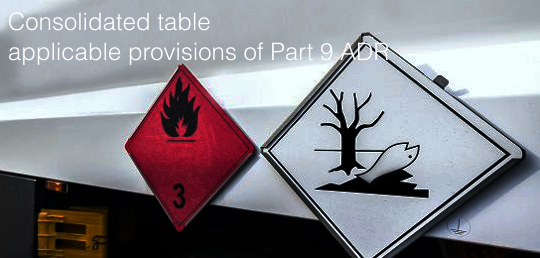
Guidelines Consolidated table of the applicable provisions of Part 9 of ADR
Guidelines Consolidated table of the applicable provisions of Part 9 of ADR for EX/II, EX/III, FL, and AT vehicles and MEMUs
European Agreement concerning the International Carriage of Dangerous Goods by Road
Consolidated table of the applicable provisions of Part 9 of ADR for EX/II, EX/III, FL, and AT vehicles and MEMUs
At its 105th session, the Working Party on the Transport of Dangerous Goods (WP.15) adopted (ECE/TRANS/WP.15/244, paragraph 69) the present consolidated table of applicable requirements of Part 9 that can serve as guidelines for the technical inspection of EX/II, EX/III, FL and AT vehicles and MEMUs.
(Source: ECE/TRANS/WP.15/2018/4 and informal document INF.31 of the 105th session of the WP.15)
UNECE 6-9 Nov. 2018




